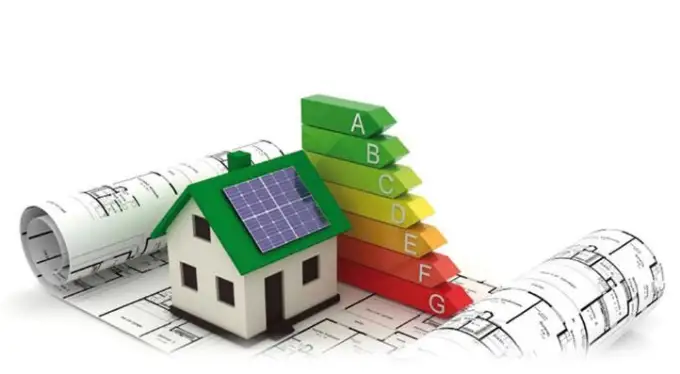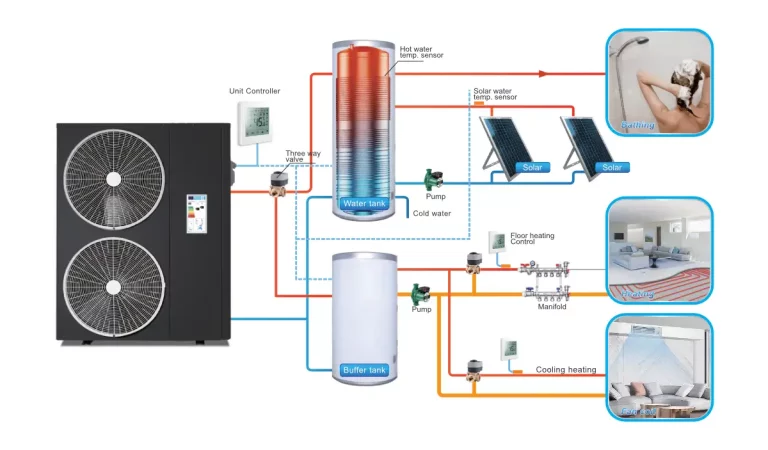The new recommendations on energy efficiency for buildings in Montenegro: what changes do they bring to the rules?
On October 9, 2023, the Chamber of Commerce and the Ministry of Capital Investments organized a round table on the topic of “Implementation of new minimum requirements for energy efficiency and building certification methodology.”
In his opening speech, Nikola Vuyoshevich, the head of the Energy Efficiency Department of the Ministry of Capital Investments, said that during the previous period, in collaboration with the University of Montenegro and the Fraunhofer Institute from Stuttgart, an economically optimal analysis was developed, software for calculating the energy characteristics of buildings was developed, and changes were made to some regulatory acts presented at the meeting.
Bozidar Pavlovich and Alexa Chulafich from the Energy Department of the Ministry of Capital Investments presented participants with a set of rules on minimum requirements for the energy efficiency of buildings and a set of rules for the certification of energy characteristics of buildings.

The Directive on the Energy Efficiency of Buildings (EPBD) and its amendments from 2018 define key requirements at the EU level, and Montenegro is obliged to implement them through its legal system, i.e., to conduct an economically optimal analysis to determine energy efficiency requirements for buildings and a long-term strategy for updating the building stock, introduce stricter goals for the reconstruction of state administrative buildings, and standards for nearly zero-energy buildings, as well as create infrastructure to support electromobility.
“Innovative minimum energy efficiency requirements for buildings are the result of an economically optimal analysis prepared in accordance with EPBD requirements. The key difference from the previous resolution is that it requires calculating the specific energy consumption for heating, cooling, ventilation, hot water preparation, and lighting using a prescribed methodology that should not exceed the specific energy consumption of a comparable building,” Pavlovich said.
He added that the investor or designer must strike a balance between reducing energy consumption and using highly efficient technical systems to achieve the desired level of energy efficiency.
Calculating energy consumption is complex and includes an analysis of how the building is used, the thermal characteristics of enclosing structures, as well as heating, cooling, ventilation, hot water preparation, lighting systems, etc. A key step in this process is the development of national software for calculating the energy characteristics of buildings – support is provided under the “Public Building Energy Efficiency Program (EEPPB)” project in collaboration with KfW Bank.
The software is called MEEC (Montenegrin Energy Efficiency Certification), and its development is managed by the Fraunhofer Institute for Building Physics (Fraunhofer IBP). The main purpose of the MEEC software is energy certification of buildings, but it can also be used by other professionals involved in building construction (designers, engineers, etc.).
Based on the report of the conducted energy audit of the building, the authorized person issues a certificate of the building’s energy characteristics. The certificate contains normative values of specific energy consumption depending on the purpose and type of the building, and the value of the building’s specific energy consumption, as well as recommendations for energy efficiency improvement measures. The certificate is issued for a period of ten years.
Alexa Chulafich provided additional information on the existing rules for the certification of energy characteristics of buildings, changes, and additions compared to the current rules, and also pointed out the problems and subsequent steps.
According to him, the following should receive a certificate of the building’s energy characteristics:
- investors of newly constructed or reconstructed buildings;
- owners of buildings or parts of buildings when selling or renting;
- government bodies, local self-government units, and state institutions established by the state, or local self-government bodies for state-owned objects they manage;
- owners of buildings used to accommodate a large number of people, such as hotels, theaters, cinemas, sports and exhibition halls, shopping centers, etc.
“Buildings are classified into seven energy classes on an A to G scale in alphabetical order, where A indicates the most favorable class, and G indicates the least favorable class,” he noted.
According to him, the energy class of the building is determined by comparing the calculated energy efficiency indicator IP (kWh/m2 °C) for standard conditions with the corresponding energy efficiency indicator of the standard condition, IPRy (AW h/m2 °C), for the same object according to the available table.
As for the fee for issuing the certificate, Chulafich reported that the commission for issuance is paid by the authorized person issuing the certificate, namely:
- 10 euros for buildings with a useful area of up to 1000 m2
- 20 euros for buildings with a useful area of more than 1000 m2
He also suggested consulting with lawyers regarding the formulation of the procedure for compensation payments to a special account or budget, as well as finding a similar model in other regulatory acts.


